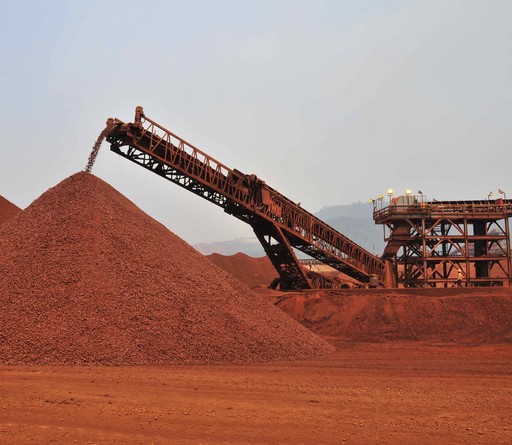China’s development financing sets model for int’l cooperation
Author : YAN YONG Source : Chinese Social Sciences Today 2017-09-25

China’s Shandong Iron and Steel Group invested in a mining project in Sierra Leone, which has created jobs for more than 5,000 people and boosted local commercial development.
Commenting on China’s growing role in promoting the economic growth of developing countries, scholars said that the Chinese foreign cooperation and investment model has set a new example for global economic partnerships.
Shahar Hameiri, an associate professor from the School of Political Science and International Studies at the University of Queensland in Australia, together with Lee Jones from the University of London and Shaun Breslin from the University of Warwick referred to China’s investment in other developing countries as “international development financing.”
Hameiri said that Chinese aid, defined as grants as well as interest-free and concessional loans, is often used for export credits, and to facilitate investment and projects by Chinese companies. Chinese aid is coupled with non-aid—non-concessional loans for infrastructure construction—in a single package.
This makes it difficult to distinguish between aid and non-aid in practice because senders and recipients see them as one package. Hameiri noted that Chinese development financing is used to refer to aid, some forms of outbound direct investment, and loans for infrastructure construction.
Some other scholars also spoke highly of China’s foreign cooperation model, saying that such a mutually beneficial model is gladly and easily received by other developing countries.
Hameiri listed characteristics of China’s international development financing. It is non-interventionist and based on recipients’ wishes, but it is also intended to foster a relationship of equals to further promote South-South Cooperation, he said.
China offers a pragmatic approach to boosting recipients’ economic development. It focuses on infrastructure investment while adopting a hands-off attitude toward governance reforms. And it aims to reinforce good diplomatic relations with recipient countries through mutually beneficial cooperation, Hameiri added.
The Chinese investment model has promoted the growth of developing economies, such as those in Africa, said Dirk Willem de Vilde, a senior research fellow from the Overseas Development Institute in Britain.
Elizabeth Manero, a columnist of the Harvard Political Review, said that numerous infrastructure programs funded by Chinese developmental assistance have created much-needed roads, bridges, railways, schools and hospitals that are beginning to bridge the huge infrastructure gap that is holding back development in many African countries at the moment. Chinese investors have saved mines that had been deteriorating under previous investors, which expanded facilities, rescued jobs, and created thousands of new ones.
However, Hameiri pointed out problems with China’s international development financing model. Competition and overcapacity produces incoherence and encourages reckless lending and borrowing. He suggested strengthening coordination between competing companies and provinces. Moreover, he noted that more attention should be paid to social and environmental safeguards.
Ye Shengtao made Chinese fairy tales from a wilderness
Ye Shengtao (1894–1988) created the first collection of fairy tales in the history of Chinese children’s literature...
-
How northern ethnicities integrated into Chinese nation
2023-09-18
-
Mogao caves
2023-09-12
-
Mogao Grottoes as ‘a place of pilgrimage’
2023-09-12
-
Time-honored architectural traditions in China
2023-08-29
-
Disentangling the civilizational evolution of China
2023-08-28
-
AI ethics in science fiction
2023-08-23














 2011-2013 by www.cssn.cn. All Rights Reserved
2011-2013 by www.cssn.cn. All Rights Reserved